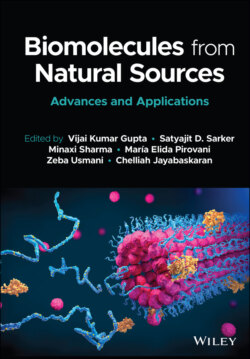Читать книгу Biomolecules from Natural Sources - Группа авторов - Страница 64
2.4.1 Starch
ОглавлениеStarch is a complex carbohydrate and one of the largest molecules in nature found chiefly in seeds, fruits, tubers, roots and stem pith of plants, notably in corn, potatoes, wheat, and rice. Starch is a polymer of D-glucose organized in two major constituents of huge molecular weights. Amylose contains amorphous and crystalline regions [145, 146]. Amylopectin is used in high-performance flocculents and as non-ionic surfactant [145]. To improve their resistance to shock and moisture, polyolefins were added in small quantities (about 10–15%) or in large proportions up to 85–95% to starch. Those polymer mixtures disappeared during the biodegradation process leaving small fragments whose degradation time was a function of their carbon chain length. Supol (Supol, Germany) Potato flour is submitted to a thermal treatment under pressure. Pellets can be injected to produce single-use dishes which are microwavable and which are compostable or can be added to animal food. Evercom (Comstarch, Japan) plasticized maize starch can be injected to make small parts for catering or for horticultural applications. This product is compatible with other biopolymers such as PHBV, PLA, PCL polyesters. Native starches differ in the amylose/amylopectin ratio depending on their botanic source, such as native starches are composed of 20–30% amylose and an additional amount of amylopectin, amyloseenriched starch may contain up to 84% amylose while waxy starches consist of nearly pure amylopectin. The main applications are for producing mulch films, shopping bags, food packaging (yogurts), nappies, medicinal and personal hygiene products [147, 148].
